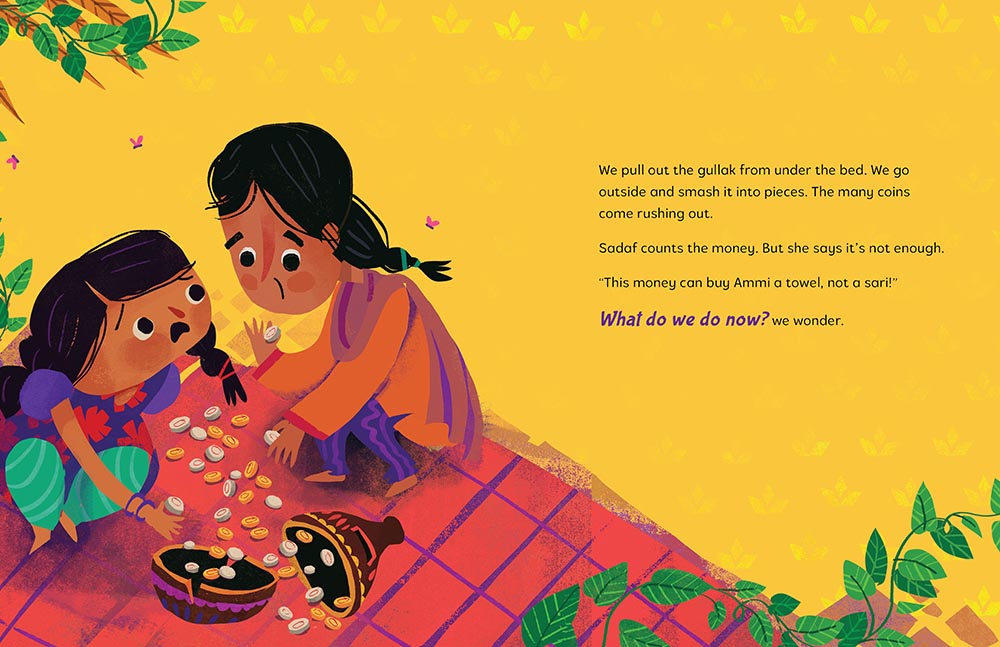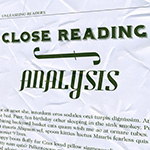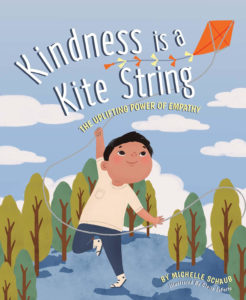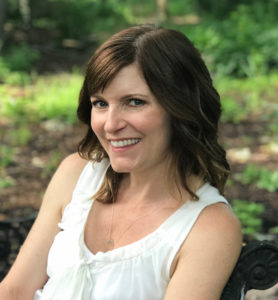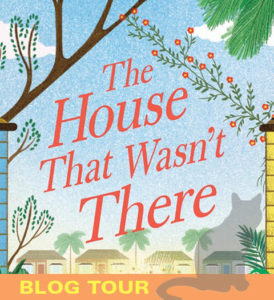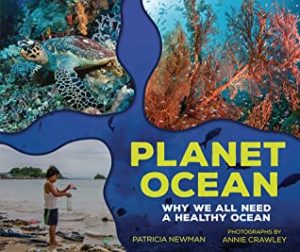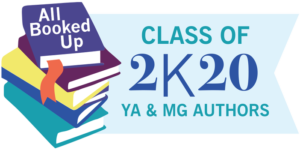
“Books that Build Empathy”
Books have the power to let us walk in someone else’s shoes—and to make us more empathetic to other people’s lived experiences in the world as we walk that path. Several authors whose books will be debuting in 2020 discussed the books that changed them, that made them cry, and that made them more empathetic to other people’s lives and struggles.
Where the Red Fern Grows
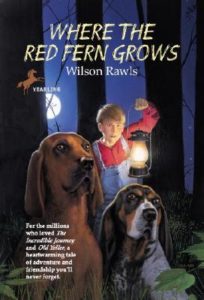
Against the backdrop of the Ozarks, ten-year old Billy raises two puppies into hunting dogs who grow to love and protect him at all costs. This classic read impacted several of the debut authors this year. Kit Rosewater, author of the forthcoming The Derby Daredevils, admits to secretly reading ahead when the book was assigned in school—and coming into class already an emotional wreck. “I was sobbing when we were still five pages out, to the point where the teacher sent me outside to catch my breath in the hall.” And Tanya Guerrero, author of How to Make Friends with the Sea, admits to “sobbing for an entire week” after reading this deeply moving tale. The book showed Guerrero “the power of great storytelling” and how close we can feel to the characters who come to life on the pages of a book.
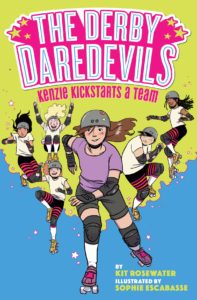

About The Derby Daredevils: Kenzie Kickstarts a Team: Kenzie and Shelly have been best friends for as long as they can remember. They hang out at the park, practice their super-secret handshake, and (most important) count down the days to their roller derby debut. It looks like their dream is coming true when Austin’s city league announces a junior league. But there’s a catch. To try out together, the Dynamic Duo will have to form a team of five players… in just one week!
As they start convincing other girls that roller derby is the coolest thing on wheels, Kenzie has second thoughts. Why is Shelly acting like everyone’s best friend? Isn’t she supposed to be Kenzie’s best friend? And things get really awkward when Shelly recruits Kenzie’s neighbor (and secret crush!) for the team.
About Kit Rosewater: Kit Rosewater writes books for children. Before she was an author, Kit taught theatre to middle school students, which even a world-renowned cat herder once called “a lot of work.” Kit has a master’s degree in children’s literature. She lives in Albuquerque, New Mexico with her spouse and a border collie who takes up most of the bed.
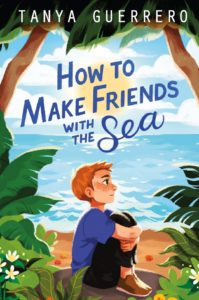

About How to Make Friends with the Sea: Pablo is homesick.
He’s only twelve years old, but he’s lived in more countries than he can count. After his parents divorced, he and his mother have moved from place to place for years, never settling anywhere long enough to call it home. And along the way, Pablo has collected more and more fears: of dirt, of germs, and most of all, of the ocean.
Now they’re living in the Philippines, and his mother, a zoologist who works at a local wildlife refuge, is too busy saving animals to notice that Pablo might need saving, too. Then his mother takes in Chiqui, an orphaned girl with a cleft lip―and Pablo finds that through being strong for Chiqui, his own fears don’t seem so scary.
He might even find the courage to face his biggest fear of all…and learn how to make friends with the sea.
About Tanya Guerrero: Tanya Guerrero is Filipino and Spanish by birth, but spent her childhood living in three continents—Asia, Europe and North America. Upon graduating from high school, she attended Boston University, where she studied Screenwriting. Over the course of eleven years, she’s worked as a photo editor in children’s educational publishing, operated her own photo studio and freelanced as a writer.
Currently, she lives in a shipping container home in the suburbs of Manila with her husband, her daughter, Violet, and a menagerie of rescued cats and dogs. In her free time she grows her own food, bakes sourdough bread and reads lots of books.
Bridge to Terabithia

One of the most impactful books to the debut authors of 2020 was Bridge to Terabithia, the story of the friendship between neighbors Jesse and Leslie, and their escape into a magical forest realm where they are able to assert the independence and adventure but find emotional sanctuary. KayLynn Flanders, author of the forthcoming Shielded admits to this being one of the first books she ever truly sobbed after reading. And Tanya Guerrero admits to an equal amount of suffering and sadness upon reading. But although the book deals with intense grief and loss, the story and the fantastic realm of Terabithia offered much more. Flanders shares that “while [Terabithia] gutted me in fifth grade, my friends and I were inspired by it. Every recess, we’d cross part of the playground into our own Terabithia, with new adventures awaiting us every day.” The best books deal with the hardest things in life, but they also give us pathways to endure them.


About Shielded: For fans of Sorcery of Thorns and Furyborn comes a thrilling new fantasy about a kingdom ravaged by war, and the princess who might be the key to saving not only those closest to her, but the kingdom itself, if she reveals the very secret that could destroy her.
The kingdom of Hálendi is in trouble. It’s losing the war at its borders, and rumors of a new, deadlier threat on the horizon have surfaced. Princess Jennesara knows her skills on the battlefield would make her an asset and wants to help, but her father has other plans.
As the second-born heir to the throne, Jenna lacks the firstborn’s—her brother’s—magical abilities, so the king promises her hand in marriage to the prince of neighboring Turia in exchange for resources Hálendi needs. Jenna must leave behind everything she has ever known if she is to give her people a chance at peace.
Only, on the journey to reach her betrothed and new home, the royal caravan is ambushed, and Jenna realizes the rumors were wrong—the new threat is worse than anyone imagined. Now Jenna must decide if revealing a dangerous secret is worth the cost before it’s too late–for her and for her entire kingdom.
About Kaylynn Flanders: KayLynn Flanders is a graduate of Brigham Young University, with a degree in English Language and a minor in editing. When she’s not writing, she spends her time playing volleyball, reading, and traveling. She lives in Utah with her family, and thinks there’s nothing better than a spur-of-the-moment road trip. Her debut novel is Shielded.
Little Women
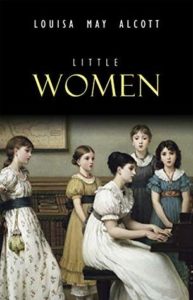
Many writers empathize with the character of Jo—and with her loss of her manuscript at the hands of her jealous and angry little sister, Amy. But we empathize with Jo for more than that moment of loss—Lorien Lawrence, author of the forthcoming The Stitchers, remembers empathizing with Jo because she felt “like I didn’t fit in…I remember crying my eyes out in that last scene with Laurie.” She identifies what makes this book so eternal, and what we all hope for when we write characters—that we make them emblematic of the way we struggle with society’s expectations, with what and who we love, and how to navigate those wild. waters. In my forthcoming book, Wider Than the Sky, I explore just this type of relationship—and ask how we can navigate complex feelings of love and disdain, of adoration and fear. Little Women will always be an example of how we learn to care for others, even from within the complexities of our desires.


About The Stichers: Instinctive Quinn Parker and scientific-minded Mike Warren are two thirteen-year old friends who uncover a centuries-old-mystery that threatens their whole town. After learning the awful truth about their neighbors, ‘The Oldies’, and the gruesome secret of how they stay young, Quinn and Mike face a race against time to expose their neighbors before they become the next victims.
About Lorien Lawrence: Lorien Lawrence graduated with creative writing degrees from Wheaton College and Bath Spa University. After college, she lived abroad in England for a few years, before returning stateside and becoming a middle school English teacher. On weekends you can often find her exploring New England haunts, getting more inspiration for her novels.
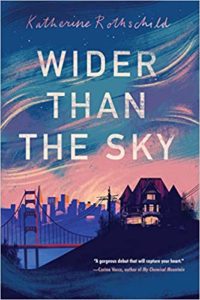

About Wider Than the Sky: Wider Than the Sky follows the dual stories of twin sisters coping with the aftermath of their father’s sudden death. When their mother moves them to a ramshackle mansion in California, the twins discover that both parents were hiding secrets about their sexual identities
About Katherine Rothschild: Katherine Rothschild, MFA, PhD, is an English professor at St. Mary’s College, a former dance instructor, and an obsessive food truck-follower. Her first-person essays have been published by KQED/NPR and The San Francisco Chronicle, and her academic work is published by Purdue University Press. She has received artist grants from Vermont Studio Center and Kindlings Words. When she isn’t studying writing or classroom social justice, she’s hanging out by the lake with her family. Wider Than the Sky from Soho Teen is her debut young adult novel.
What books moved you, readers? What books made you more empathetic, more caring, more sensitive to others? What books can teach empathy?
Thank you to all the authors for sharing their choices and their upcoming books! Visit https://classof2k20books.com/ to learn more about these and all class of 2k20 authors and their books!



